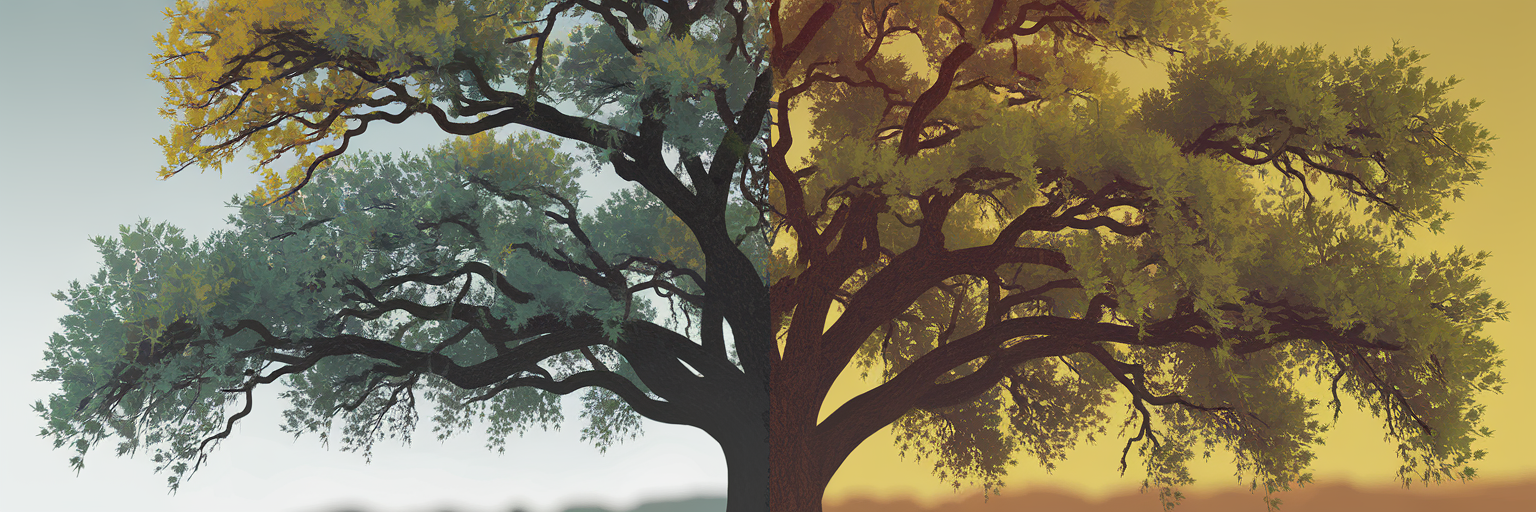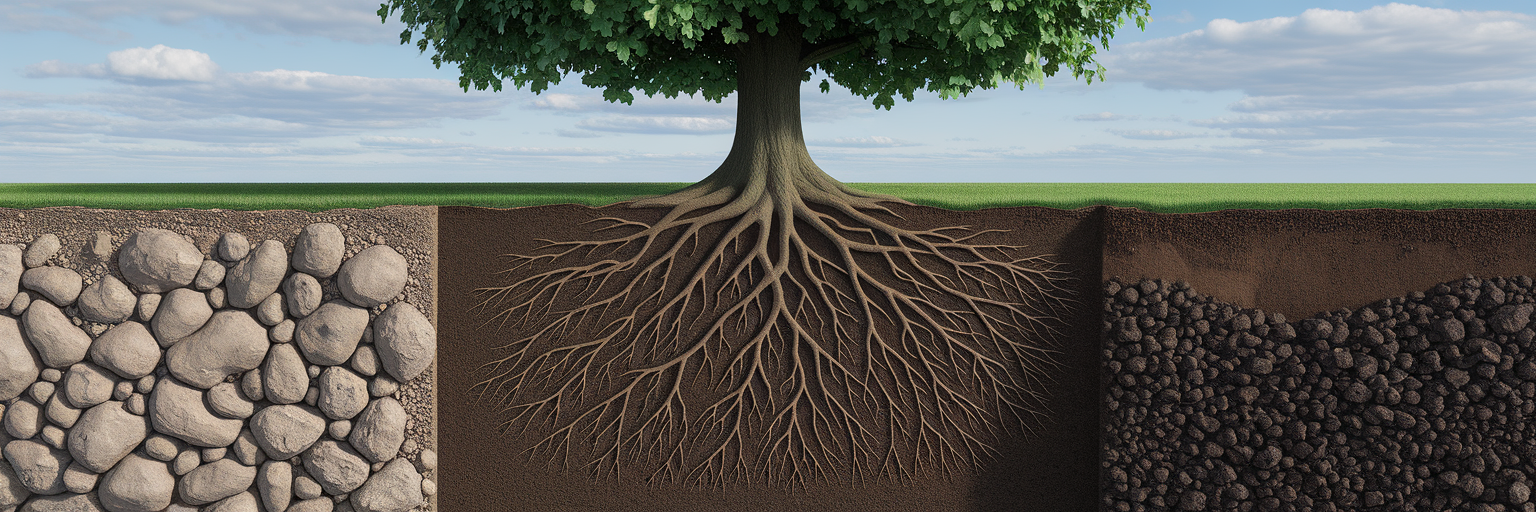Understanding the Oak Wilt Threat
The sprawling canopies of oak trees are an iconic part of the San Antonio landscape. They provide shade, beauty, and a sense of permanence. This deep-rooted presence, however, also makes our community a high-risk area for a devastating fungal disease. Oak wilt in San Antonio is not just a minor issue; it is an aggressive fungus that attacks a tree from the inside out. It works by clogging the tree’s water-conducting tissues, effectively cutting off its life supply and leading to a rapid decline.
The disease spreads in two distinct and efficient ways. Below ground, it travels silently through the interconnected root systems of oak trees, passing from one neighbor to another. Above ground, the fungus relies on sap-feeding beetles. These insects are attracted to the fungal spores and carry them to fresh wounds on healthy trees, starting a new infection. Understanding this dual threat is the first step in protecting our cherished oaks.
Early Warning Signs of an Infection
Recognizing the early signs of oak wilt in trees is critical, but the symptoms can be subtle and often differ between species. Red oaks and live oaks, both common in our area, display the disease in unique ways. Homeowners who can spot these differences are better equipped to act quickly.
The table below breaks down what to look for in each type of tree.
| Symptom | Appearance in Red Oaks (e.g., Spanish Oak) | Appearance in Live Oaks |
|---|---|---|
| Leaf Discoloration | Leaves turn pale green or bronze, often starting at the edges and moving inward. | Distinctive yellowing or browning of the leaf veins (veinal necrosis) while the rest of the leaf remains green. |
| Wilting Pattern | Rapid wilting occurs from the top of the canopy downward. The entire tree can appear dead within weeks. | Slower, more gradual decline. Symptoms may appear on scattered branches over one or more years. |
| Leaf Drop | Sudden and extensive leaf drop occurs shortly after discoloration. | Leaves are retained on the tree for a longer period after showing symptoms. |
Beyond these visual cues, the speed of decline is a major red flag. An oak tree dropping leaves unnaturally fast, even while they are still partially green, is a strong indicator of infection. In some infected Red Oaks, another unique sign can appear: fungal mats. These growths form under the bark and emit a distinct, sweet odor designed to attract the very beetles that spread the disease. While these signs are strong indicators, it is also helpful to rule out other causes of tree stress. We have previously shared insights on effective treatment options for common tree insect infestations that can help you distinguish the problem.
Critical Prevention Methods for Healthy Oaks
When it comes to oak wilt, prevention is not just the best strategy; it is the only reliable one. Knowing how to prevent oak wilt involves a few disciplined practices that every property owner in San Antonio should adopt. These steps are simple, effective, and crucial for safeguarding your trees.
- Avoid Pruning During High-Risk Season: The single most important rule is to avoid pruning or wounding oak trees between February 1st and July 1st. This is the peak season for fungal spore formation and beetle activity. As outlined by the City of San Antonio, adhering to this timeline is a critical community-wide effort. This is the official oak tree pruning season Texas residents must follow to minimize risk.
- Seal All Wounds Immediately: Accidents happen. A stray lawnmower nick or a storm-damaged limb creates an open invitation for beetles. Any cut or injury on an oak tree, no matter how small, must be painted immediately. Use a wound dressing or even a simple can of latex paint to create a physical barrier that blocks the fungus.
- Sanitize Pruning Tools: If you must prune during the safe season, always disinfect your tools. The fungus can easily travel from an infected tree to a healthy one on a saw blade. A quick wipe with a bleach solution or rubbing alcohol between each tree is a simple step that prevents cross-contamination.
- Be Cautious with Firewood: Never transport or buy firewood from unknown sources. Infected wood can harbor the fungus for months, and moving it can introduce oak wilt to a completely new area. Only use locally sourced firewood to avoid accidentally spreading the disease.
While these steps are straightforward, proper execution is vital. Ensuring cuts are clean and sealed correctly is part of the professional care we provide through our residential services to maintain tree health and safety.
What to Do if You Suspect Oak Wilt
If you see symptoms that suggest an oak wilt infection, the worst thing you can do is wait. This disease moves too quickly for a “wait-and-see” approach. Immediate action is necessary to confirm the diagnosis and contain the spread. Your first and most important step should be to contact a professional for an accurate assessment.
We strongly recommend consulting a Board Certified Master Arborist. An expert can confidently distinguish oak wilt from less severe issues like drought stress or nutrient deficiencies, which can sometimes present similar symptoms. Once a diagnosis is confirmed, a professional oak wilt treatment plan can be developed. This is not a do-it-yourself problem. An experienced San Antonio tree care service will recommend a course of action tailored to your property, which may include:
- Strategic Tree Removal: Safely removing infected trees to prevent the fungus from spreading further.
- Trenching: Digging deep trenches to sever the root connections between infected and healthy trees, creating a crucial defensive line.
- Fungicide Injections: Applying therapeutic fungicides to high-value, uninfected trees to protect them from potential exposure.
An expert evaluation provides clarity and a decisive plan to protect your landscape investment.
Fostering Long-Term Tree Resilience
Ultimately, the best defense against oak wilt and other stressors is a healthy, resilient tree. Proactive care builds a strong foundation that helps oaks withstand threats. Simple practices like implementing an effective tree watering system during our dry spells and applying a protective layer of mulch can make a significant difference in a tree’s overall vitality.
Partnering with an experienced local tree care service provides the expertise needed to protect your valuable trees for generations. With roots in this community since 1955, we have a deep passion for preserving the health and beauty of San Antonio’s urban forest. You can find more insights on proactive tree care on our blog.






